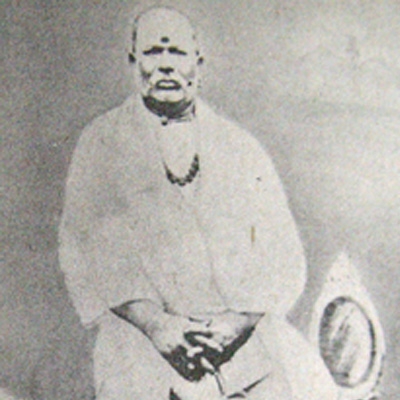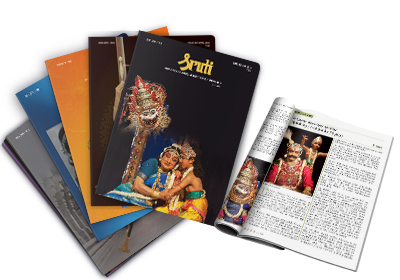
Pudukottai Manpoondia Pillai (1857-1922)
The renowned percussionist Manpoondia Pillai was colloquially known as Mamundia Pillai. Born in 1857, Manpoondi seems to have been a simple, listless lad in his youth. He is reported to have had an encounter with a yogi named Brahmananda Paradesi, after which he blossomed in music. His tutor was Mariappa Tavilkarar, a competent tavil vidwan.
Manpoondia Pillai introduced the one-sided, sruti-less khanjira on the classical music stage and evolved a technique to bring out a variety of sounds from this instrument, so that in time, the khanjira could hold its own against the tonally much superior mridangam. In his time, he played the khanjira in tandem with the leading mridanga vidwans of the day. Inspired by tavil artistry, a strong content of vyavaharam or rhythmic complexity characterised his style and the laya tradition he founded. It blended uniquely with the aesthetic aspect of music.
Many of his disciples were adept at playing a wide variety of percussion instruments, such as the tavil, the mridangam, the ghatam and, of course, the khanjira.
Manpoondia Pillai was a contemporary of many great musicians like Ramanathapuram ‘Poochi’ Srinivasa Iyengar, Narayanaswami Appa and Tirukodikaval Krishna Iyer. Kallidaikurichi The younger Vedanta Bhagavatar, Harikesanallur Muthiah Bhagavatar, Malaikottai Govindaswamy Pillai and Konerirajapuram Vaidyanatha Iyer were also his contemporaries. According to legend, Konerirajapuram Vaitha, as he was popularly known, began to strike terror in the hearts of his accompanying artists after he learnt laya intricacies from Pillai. Tirukodikaval Krishna Iyer is said to have persuaded him to cut down the pyrotechnics and concentrate on the gentler side of music.
Manpoondia Pillai died in January 1922.


